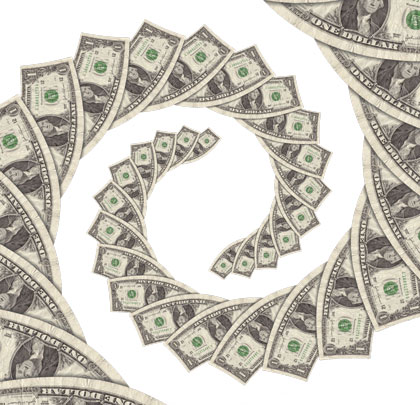Industry and regulators need a more accurate and adaptive view of tomorrow’s energy market
The electric and gas utility industries are facing substantial changes. For decades, rising sales have contributed to increasing revenues and profits, but the combination of improved energy efficiency with the growing use of solar electric systems and other forms of “distributed energy” has reduced growth rates, which could lead to small declines in future sales. But these potential small declines will not lead to the kind of “death spirals” claimed by some industry alarmists, as our new report, The Utility of the Future and the Role of Energy Efficiency, shows. Still, the industry and their regulators will need to make substantial changes in the next few years in order to continue providing quality service at a reasonable price, while providing utilities reasonable returns on their investments.
THE FORECAST FOR UTILITY SALES
According to the alarmists, utility sales could plummet, requiring utilities to raise rates so they can recoup their fixed costs (such as the cost of the current distribution system), and these rising rates would drive additional customers to leave the system, a phenomenon they call a death spiral. Our study examines three potential sales scenarios, employing increasing levels of energy efficiency, solar electric power and electric vehicles.
The most extreme scenario includes levels of energy efficiency now being achieved in only a few states plus the use of solar electric power that eventually uses nearly all available roof space. Under this extreme scenario, national electricity sales decline about 10 percent by 2040, an average reduction of 0.39 percent per year. Under a more likely mid-range case, sales grow 0.04 percent per year, while under the reference scenario, developed by the Energy Information Administration, sales grow 0.7 percent per year.
ENERGY EFFICIENT OPTIONS FOR A NEW WORLD
In our view, a 10 percent sales decline over twenty-five years is far lower than what would be required to initiate a death spiral. Under the more likely scenario, sales are essentially flat. In such a scenario, utilities that have relied on rising sales to fuel profits will need to pursue new business models if they want to see profit growth. To address this finding, our report recommends that utilities offer optional energy-related services to their customers, including energy efficiency and technical help and financing for larger customers installing and operating high-efficiency combined heat and power systems. Such efforts can contribute to utility profits, reduce customer bills (since consumption is lower) and also provide services that customers value, positioning the utilities to offer additional services.
To support this effort, we also recommend that regulators
- adjust rates so that fixed costs are fully recovered as sales levels change,
- provide utilities financial incentives for meeting energy efficiency goals,
- reform ratemaking so that costs are fairly allocated and price signals encourage efficient use of energy, and
- develop rules to improve the ability of utilities to offer optional services in ways that provide a level playing field relative to non-utility providers.
Quite a few states have taken some of these steps, but only a few states have taken most of them. In addition, we recommend upgrading management of the electric grid to better handle increased amounts of variable and distributed generation.
STOP DIGGING, START CLIMBING
Our research also identifies several things not to do. In our view, the ‘first rule of holes’ applies: When you’re in a hole, the first thing to do is stop digging. If sales are level or declining, then utilities and regulators need to be careful of investing too much in new generation, transmission and distribution. Our report notes how Australian utilities invested so much in transmission and distribution that rates doubled, and how German utilities over-invested in generation, contributing to a steep drop in stock prices. While some investments in fast ramp-up generation, transmission to link control areas, grid hardening, and grid control will be needed, these should be prioritized so costs and rates are kept to reasonable levels.
Our call for increased utility investment in energy efficiency fits in well with proposed regulations (see the EPA’s “Clean Power Plan Proposed Rule” on their site: www2.epa.gov/carbon-pollution-standards/clean-power-plan-proposed-rule) on existing power plants published last week by the Environmental Protection Agency. The proposal calls for substantial cuts in carbon dioxide emissions from the power sector, but provides utilities and states with the flexibility to use energy efficiency programs and policies to help achieve those reductions. An earlier ACEEE report from April 2014 found that energy efficiency could achieve all of the needed reductions while also increasing GDP and employment.
In summary, if we can get the rules right and continue to develop the technologies and systems we will need, utilities can maintain profitability, customers can receive the services they need, bills can be kept to reasonable levels, and we will all enjoy a cleaner environment.
■ ■ ■
[divider]
ABOUT THE AUTHOR
Steven Nadel is the executive director of the American Council for an Energy-Efficient Economy (ACEEE), a nonprofit, 501(c)(3) organization, that acts as a catalyst to advance energy efficiency policies, programs, technologies, investments, and behaviors. Read the ACEEE’s newest report, The Utility of the Future and the Role of Energy Efficiency, in full at www.aceee.org/research-report/u1404.
MODERN PUMPING TODAY, June 2014
Did you enjoy this article?
Subscribe to the FREE Digital Edition of Modern Pumping Today Magazine!


